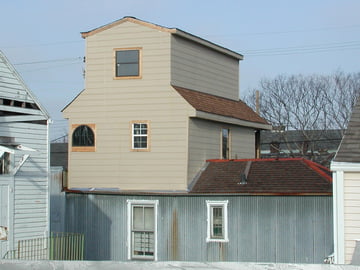A QUICK GLANCE…
The lifespan of a furnace can vary greatly depending on its type, brand, use, and maintenance, but generally, a well-maintained furnace can last between 15 to 20 years. Certain factors such as regular professional maintenance, the quality of the installation, and the conditions in which the furnace operates can potentially extend its life beyond 20 years. However, if the furnace is not regularly serviced or operates under harsh conditions, its lifespan could be significantly shortened. As such, it’s important to routinely service your furnace and replace it when necessary to ensure efficient and safe home heating.

As homeowners, we rely heavily on our furnaces to keep us warm and comfortable during the colder months. But have you ever wondered how long your furnace will actually last?
The answer varies depending on several factors, including the type of furnace you have and how well it is maintained. First, it’s important to understand that there are several types of furnaces, including gas, electric, and oil.
Each type has a different lifespan, with gas furnaces typically lasting the longest at around 15-20 years, electric furnaces lasting around 20-30 years, and oil furnaces lasting around 15-25 years. However, these are just estimates and the actual lifespan of your furnace will depend on several factors.
In this article, we’ll explore those factors and provide tips for extending the life of your furnace.
Types of Furnaces and Their Lifespans
Discovering the different types of furnaces and how many years they typically survive will leave you feeling confident in your home’s heating system. The lifespan of a furnace depends on several factors, including the type of furnace and how well it’s maintained.
Oil furnaces and gas furnaces are the most common types of furnaces in North America, and they typically last between 15 and 25 years. Electric furnaces and propane furnaces are less common than oil and gas furnaces, but they still have their place in some homes.
Electric furnaces are generally more expensive to run than other types of furnaces, but they have a longer lifespan. A well-maintained electric furnace can last up to 30 years, while a propane furnace typically lasts between 10 and 15 years.
When it comes to deciding which type of furnace to install in your home, there are several factors to consider. While the initial cost of an electric furnace may be higher than other types of furnaces, it may be worth it in the long run due to its longer lifespan. However, if you have access to natural gas or propane and want a more affordable option, a gas or propane furnace may be the better choice.
Ultimately, the decision will depend on your budget, energy needs, and personal preferences.
Importance of Regular Maintenance
To ensure your furnace runs smoothly and efficiently for years to come, you need to make regular maintenance a priority. By doing so, you can reap the benefits of a well-functioning furnace that doesn’t break down unexpectedly. Regular maintenance can also be cost-effective in the long run, as it can help prevent major repairs or replacements that can be much more expensive.
One of the most important aspects of regular furnace maintenance is changing the air filter on a regular basis. This should be done every 1-3 months, depending on the type of filter and how often the furnace is used. A dirty air filter can cause the furnace to work harder than it needs to, which can lead to increased energy costs and can even cause the furnace to overheat.
In addition to changing the air filter, it’s also important to schedule an annual furnace tune-up with a professional HVAC technician. During this tune-up, the technician will inspect and clean all parts of the furnace, including the blower, burner, and heat exchanger. This can help ensure that everything is working properly and can catch any potential issues before they become major problems.
By making regular maintenance a priority, you can keep your furnace running smoothly for many years to come.
Climate and Frequency of Use
Depending on where you live and how often you use your furnace, you may need to adjust your maintenance schedule to ensure that your system is running efficiently and effectively.
Climate plays a significant role in the lifespan of your furnace. If you live in an area with extreme temperature fluctuations, your furnace will have to work harder to maintain your desired temperature. This extra workload can lead to a shorter lifespan for your furnace and higher repair costs in the long run.
In addition to climate, the frequency of use also impacts the lifespan of your furnace. If you use your furnace more often, it will wear out quicker, especially if you don’t keep up with regular maintenance.
Neglecting maintenance can cause your furnace to work harder than it needs to, leading to breakdowns and costly repairs. However, if you use your furnace sparingly and keep up with regular maintenance, you can expect a longer lifespan for your furnace.
Lastly, the level of insulation in your home can also affect the lifespan of your furnace.
A well-insulated home can reduce the workload on your furnace, helping to keep it running efficiently. If your home is not properly insulated, your furnace will have to work harder to maintain your desired temperature, leading to a shorter lifespan.
Proper insulation can help extend the lifespan of your furnace and reduce the need for costly repairs.
Signs Your Furnace May Need Replacement
If you want to avoid costly furnace repair bills and ensure your home stays warm and cozy, it’s crucial to know the signs that your furnace may need replacing.
One of the most common indicators is age. Furnaces typically last anywhere from 15-20 years, and if yours is approaching this range, it may be time to consider a replacement.
Additionally, if your furnace is no longer energy efficient, it can end up costing you more money in the long run. Here are five signs that your furnace may need replacement:
- Your furnace is over 15 years old
- Your energy bills have been steadily increasing
- Your furnace is making strange noises or emitting unusual smells
- You’ve needed frequent repairs in the past year
- Your home is unevenly heated, with some rooms being too hot or too cold
If you notice any of these signs, it’s important to have your furnace inspected by a professional. They can assess the condition of your furnace and determine whether it’s time for a replacement or if it can be repaired.
Investing in a new furnace may seem costly upfront, but it can save you money on energy bills and prevent the need for frequent repairs in the long run. Plus, you’ll have peace of mind knowing that your home will stay warm and cozy for years to come.
Tips for Extending Your Furnace’s Lifespan
Want to keep your home warm and save money? Check out these tips for extending your furnace’s lifespan!
One of the easiest ways to extend your furnace’s lifespan is by performing DIY maintenance. This includes regularly changing air filters, cleaning the blower assembly, and inspecting the furnace’s ductwork for any leaks. By doing these things, you can help ensure that your furnace is running efficiently and not overworking itself.
Another way to extend your furnace’s lifespan is by making energy efficiency improvements. This could include upgrading to a programmable thermostat, adding insulation to your home, or sealing any air leaks around doors and windows. By making these improvements, your furnace won’t have to work as hard to keep your home warm, which can reduce wear and tear and extend its lifespan.
Finally, it’s important to have your furnace professionally serviced at least once a year. A professional technician can inspect your furnace, clean it thoroughly, and make any necessary repairs. By catching any potential issues early on, you can prevent them from turning into major problems that could lead to costly repairs or even a full furnace replacement.
By following these tips, you can help ensure that your furnace lasts as long as possible, keeping your home warm and your wallet happy.
Conclusion
Overall, understanding the lifespan of your furnace is essential for both your comfort and budget. By knowing the type of furnace you have and its expected lifespan, you can plan for future replacements and budget accordingly.
Additionally, regular maintenance and upkeep can extend the lifespan of your furnace and prevent costly repairs or replacements. Paying attention to your furnace’s performance, such as strange noises or insufficient heating, can also indicate when it’s time for a replacement.
With proper care and attention, your furnace can last for many years, providing warmth and comfort to your home.




